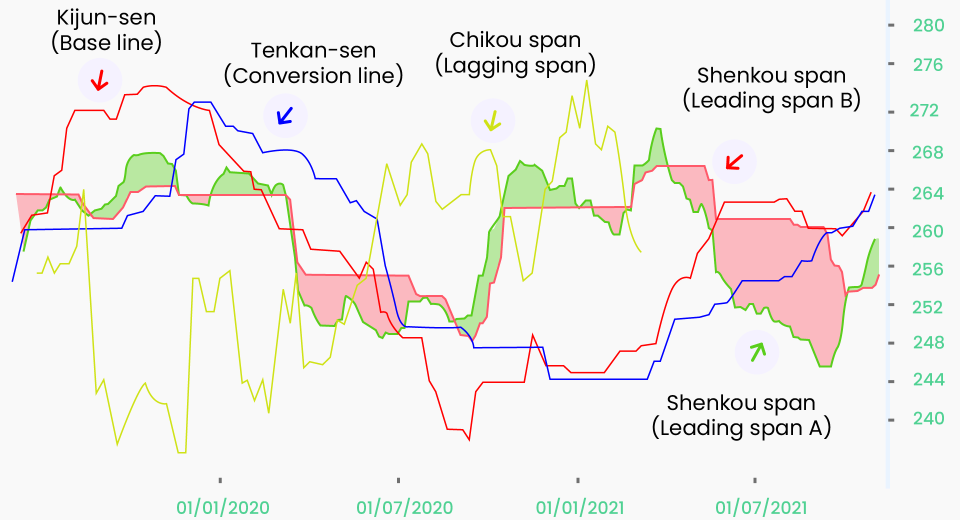How to Manage Risks of Trading

“The best investors do not target return; they focus first on risk, and only then decide whether the projected return justifies taking each particular risk.” Seth Klarman (investment guru).
Risk management should be considered before and above potential profits. It protects what you already have from being wiped out if the financial markets make move against your predictions. No one can escape trading risk, but you can anticipate, manage, and minimise it. Let’s look at ways to strategically manage trading risks.
Risk Calculation
You can only manage the risk you recognise. This is why calculating your risk helps you define how much you are willing to take. Quantifying risk also helps you in:
- Sizing your positions
- Setting appropriate stop loss limits
- Targeting profit values to set exit points
Here are the top 5 calculations you must include in your trading strategy:
- Win/Loss Ratio
The W/L ratio indicates the win rate of your closed trades. This is one more reason to practise on a demo account, as it helps you evaluate how your trading strategy is performing.
W/L = Number of successful trades/Number of failed trades
The W/L ratio indicates how successful the trading strategy was in the past and not how it will perform in the future. This is not very useful on its own, but helps traders evaluate their optimal risk reward ratio for a particular position or to adjust their trading strategy.
- Risk Reward Ratio (RRR)
It is a ratio of the loss to the profit potential of a trade.
RRR = Potential Loss / Potential Profit
What does it indicate?
RRR > 1 => Higher potential of profit than loss in a trading position
RRR < 1 => Higher potential of loss than profit in a trading position
RRR = 1 => The same potential of profit and loss in a trade
Combining W/L and RRR:
- If your W/L is higher, your risk/reward can be higher.
- A low win rate, say below 50%, requires your winning trades to be of a larger value than your losing trades, for you to be profitable. This means your risk/reward will need to be lower.
- Experts suggest targeting a win rate of 50% to 70%.
- An RRR of 1.0 if your win rate is 60% to 70%.
- An RRR of 0.60 to 0.65 if your win rate is below 50%.
- Sharpe Ratio
This is one of the most popular measures of the ratio of returns against the risk taken. It helps you evaluate the profit you may receive from enduring the volatility of a riskier asset. The goal is to ensure that additional risk brings in extra compensation.
Sharpe Ratio = (Return of the portfolio – Risk-free rate)/ Standard deviation of the portfolio’s extra return
What traders typically aim for is a Sharpe ratio of less than 1.
Did you know?
Sharpe ratio is also used to back test a trading strategy to measure and optimise its efficacy.
- Alpha
Alpha measures the performance of an asset against a benchmark for a time period. It is a measure of the active risk that arises because of the trading strategy.
Alpha = Rp – [Rf + Beta (Rm – Rf)], where:
Beta is the volatility ratio of the asset against that of the market (discussed later in this article).
Rp is the difference between the return percentage of the portfolio and the return percentage of the benchmark for a period.
Rm is the difference between the return of the market and the return percentage of the benchmark for a period.
Rf is the difference between the return of the risk-free trade and the return percentage of a minimal-risk investment.
What does it indicate?
Alpha > 0 => Asset has outperformed the benchmark
Alpha < 0 => Asset has underperformed the benchmark
Alpha = 0 => Asset performance is inline with the performance of the benchmark
- Beta
Beta measures the volatility of an asset or portfolio versus that of the market. It is a measure of the passive risk that arises from market events that are out of a trader’s control.
Beta = Covariance (Re, Rm) / Variance (Rm), where:
Rm is the return of the market minus the return percentage of the benchmark in the chosen period.
Re is the return of the asset minus the return percentage of the asset in the chosen period.
What does it indicate?
Beta > 1 => Asset or portfolio is more volatile than the market
Beta < 1 => Asset or portfolio is less volatile than the market
Beta = 1 => Asset or portfolio is as volatile as the market
A lower beta means lower risk and lower profit potential, while a higher beta means higher risk and higher potential.
Did you know?
Traders favour low-beta assets when the market is highly volatile and high-beta ones when it is trending upwards.
You can use active (Alpha) and passive (Beta) risk calculations to evaluate the risk exposure over a certain period. Traders often use these evaluations for multiple timeframes to plan their trades by establishing a confidence interval. This is the period where they expect low risk and higher returns than the average asset performance.
Risk Management
Calculating risk exposure helps you align risk with your appetite and then manage it to achieve your trading goals. Risk management has more to it that calculations.
Size Your Positions Right
Have you heard about the 1% rule? The size of a single position should not be greater than 1% of your total available capital. Volatility and risk associated with each trade is different and the factors that impact these also vary. Sizing your trading positions helps protect your capital by not overtrading.
Setting the Right Exit Points
Accurate stop loss and take profit points to close positions can improve the performance of your portfolio. Doing so eliminates emotions from trading decisions. Seasoned traders believe that closing a winning position on achieving a profit target is much more important than holding onto a position in the hopes of the market continuing to move favourably. This is because markets can reverse quickly and wipe off gains that you could have booked. Similarly, exiting a trade when the market moves against your predictions becomes paramount in avoiding losses from piling up.
Moving averages, pivot points, and average true range are some of the indicators that beginners commonly use to evaluate the exit points for trading positions.
Diversifying Your Portfolio
Portfolio diversification helps protect the overall performance of your assets in different market situations. You will need to know which assets have negative or no correlation. Two assets are said to have negative correlation if they move in the opposite direction in response to a news release. For instance, commodities and the US dollar exhibit a negative correlation. This is because commodities are quoted in US dollars in the global financial markets. When the US dollar strengthens, commodities become more expensive for traders holding other currencies, which reduces their demand and exerts pressure on their prices.
Hedging Your Position
This is extremely useful while trading CFDs and other derivatives. These instruments allow traders to speculate price movements in either direction. For instance, if you have opened a long position as you expect an asset price to rise, you can simultaneously open a smaller short position to benefit if the asset price declines.
To Sum Up
- Never risk more than you can afford to lose.
- Risk management should be a part of your trading plan and not an afterthought.
- Create, test, and stick to your risk management techniques.
- Use stop loss and take profit orders with every trading position.
- Track your performance and keep fine-tuning your trading strategy.
- Do not make trading decisions based on emotions.
Disclaimer:
All data, information and materials are published and provided “as is” solely for informational purposes only, and is not intended nor should be considered, in any way, as investment advice, recommendations, and/or suggestions for performing any actions with financial instruments. The information and opinions presented do not take into account any particular individual’s investment objectives, financial situation or needs, and hence does not constitute as an advice or a recommendation with respect to any investment product. All investors should seek advice from certified financial advisors based on their unique situation before making any investment decisions in accordance to their personal risk appetite. Blackwell Global endeavours to ensure that the information provided is complete and correct, but make no representation as to the actuality, accuracy or completeness of the information. Information, data and opinions may change without notice and Blackwell Global is not obliged to update on the changes. The opinions and views expressed are solely those of the authors and analysts and do not necessarily represent that of Blackwell Global or its management, shareholders, and affiliates. Any projections or views of the market provided may not prove to be accurate. Past performance is not necessarily an indicative of future performance. Blackwell Global assumes no liability for any loss arising directly or indirectly from use of or reliance on such information herein contained. Reproduction of this information, in whole or in part, is not permitted.




